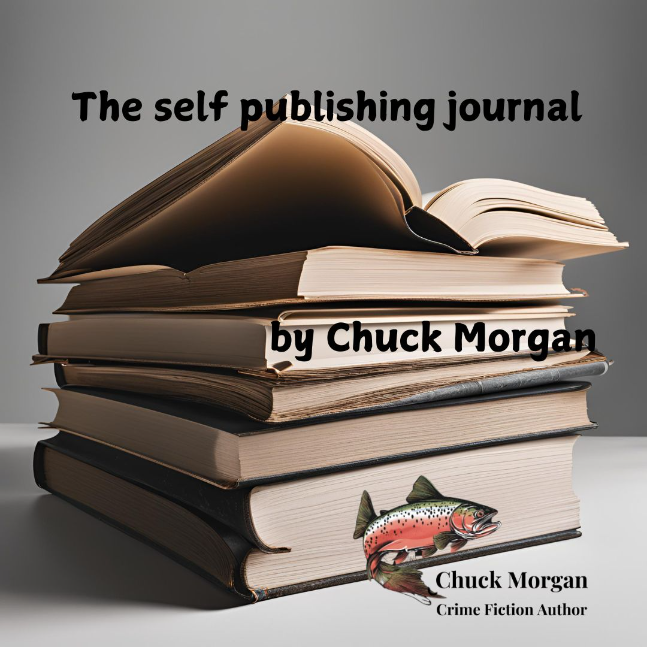- Home
- Articles
- How Do Setting and Atmosphere Influence Crime Stories?
How Do Setting and Atmosphere Influence Crime Stories?

How Do Setting and Atmosphere Influence Crime Stories?
Chuck Morgan, Crime Fiction Author
It’s vital to understand that the setting and atmosphere in crime stories play a significant role in shaping the narrative. By immersing yourself in the physical and emotional landscapes of these tales, you can appreciate how they enhance tension, character development, and plot progression. Whether it's the shadowy alleys of a bustling city or the eerie silence of a deserted countryside, these elements create a backdrop that influences your perception of guilt, innocence, and suspense.
The Importance of Setting in Crime Stories
A well-crafted setting serves as a backbone for crime stories, influencing mood, tone, and the overall narrative structure. It not only creates a backdrop for the action but also shapes the reader's perception of events. When you immerse yourself in a vividly depicted world, your emotional connection to the story deepens, enhancing your experience and engagement with the plot and characters.
Establishing Context and Background
At the beginning of a crime story, the setting establishes the context and background that frames the unfolding drama. Whether it's a gritty urban landscape or a secluded rural town, the environment provides meaning to characters' actions and motives. You gain insight into societal norms, cultural values, and potential dangers that influence the storyline, helping you better understand the characters involved.
Impact on Character Development
Among the many effects that setting has on crime stories, its impact on character development is especially significant. The environment often reflects and shapes the internal struggles and motivations of the characters within the narrative.
Considering the complexities of your characters, the setting can serve as a mirror to their inner conflicts and ambitions. For instance, a detective working in a corrupt city may become hardened and cynical, while a protagonist in a tranquil village might embody innocence. Your understanding of your characters deepens as you witness how their environments influence their choices and growth throughout the story. Hence, setting not only contextualizes events but also enriches the emotional landscape of character dynamics.
Atmosphere and Mood in Crime Narratives
It is crucial to recognize that atmosphere and mood play a pivotal role in shaping the emotional experience of crime narratives. These elements create the backdrop against which characters operate and crimes unfold, influencing how you perceive their motivations and dilemmas. An eerie, suspenseful setting can heighten your sense of unease, pulling you deeper into the story and making each plot twist feel more impactful.
Creating Tension and Suspense
Creating tension and suspense in crime stories relies heavily on the atmosphere you establish. By using descriptive language to evoke fear, uncertainty, and anticipation, you can keep readers on the edge of their seats. Whether it's through dark alleyways, stormy weather, or foreboding silence, a well-crafted atmosphere can build momentum, enticing you to explore further into the narrative.
Influencing Reader Engagement
The atmosphere of a crime story significantly influences your engagement as a reader. The right mood can draw you in, making you invested in the characters and their fates, while a poorly executed atmosphere might leave you feeling disconnected and uninterested. As you immerse yourself in the setting, your emotional responses become intertwined with the narrative, enhancing your overall experience.
Understanding how atmosphere affects reader engagement allows you to appreciate the depth of crime narratives. By immersing yourself in an interesting setting, you not only become an observer, but also an active participant in the unfolding drama. When tension-filled environments challenge your perceptions, you are more likely to empathize with characters' struggles, making the story resonate on a personal level. This bond between atmosphere and engagement ultimately enriches your reading experience, leading you to expect each new revelation with heightened interest.
Case Studies: Setting and Atmosphere in Notable Works
Some of the most impactful crime stories leverage setting and atmosphere to elevate their narratives. The following case studies illustrate how critical these elements are:
- "The Hound of the Baskervilles" by Arthur Conan Doyle—The eerie moors set the stage for the supernatural elements, encapsulating the tension throughout the investigation.
- "Gone Girl" by Gillian Flynn—The suburban backdrop contrasts the dark psychological elements, enhancing the narrative's complexity.
- "The Silence of the Lambs" by Thomas Harris—The gothic atmosphere of the mental institution amplifies the horror and psychological intrigue.
- "The Girl with the Dragon Tattoo" by Stieg Larsson—The bleak Scandinavian landscape mirrors the chilling undertones of the investigation.
Classic Crime Literature
Classic crime literature often employs atmospheric settings to create suspense and draw readers deeper into the narrative. The fog-filled streets of Victorian London in "The Adventures of Sherlock Holmes" set an ominous tone, making every case more thrilling. Such meticulous detailing of the environment adds immeasurable depth to the storytelling, proving that the surroundings can be just as important as the characters themselves.
Contemporary Examples
The modern crime genre showcases innovative use of setting and atmosphere to enhance suspense. Authors today continue to explore diverse environments that reflect the themes of their stories, making the context integral to their plots.
Examples like "Big Little Lies" by Liane Moriarty use the idyllic yet deceptive coastal town to highlight darker community secrets, while Tana French’s "In the Woods" incorporates lush Irish landscapes that juxtapose beauty with haunting memories. These contemporary works use vivid atmospheres, allowing you to fully immerse yourself in the narrative and feel the tension inherent in the setting, amplifying the overall impact of the crime story.
The Role of Locale: Urban vs. Rural Settings
For crime stories, the setting often shapes not only the narrative but also the motivations of characters involved. In urban environments, the pace and density create unique pressures and social dynamics that can lead to crime, while rural settings might evoke different issues, such as isolation and limited resources, influencing criminal activities. Understanding these contrasts can deepen your appreciation for the narrative layers within crime stories.
Urban Crime Dynamics
An urban setting enhances the complexity of crime dynamics, often driven by anonymity, socio-economic disparities, and a vibrant nightlife. These elements create fertile ground for criminal activities ranging from petty theft to organized crime. In addition, law enforcement and community initiatives can act as both a deterrent and a factor in the escalation of crime, making urban locales particularly engaging backdrops for your crime stories.
Rural Crime Challenges
Rural crime presents distinct challenges characterized by isolation and fewer resources. This environment can lead to under reported incidents, as communities may rely on informal networks for justice or resolution instead of formal law enforcement. A lack of immediate response services adds an interesting dimension to crime in the countryside, often resulting in unique stories that explore themes of mistrust and self-reliance.
Understanding rural crime challenges involves recognizing the impact of geography, population density, and community resources on criminal behavior. While urban areas may see crime spurred by anonymity, rural regions often grapple with isolation that hinders reporting and resolution. You may find that these stories highlight the interpersonal dynamics that arise when communities deal with crime, revealing deep-seated tensions or alliances that influence how justice is pursued in less populated locales.
Cultural Influences on Setting and Atmosphere
Once again, culture plays a vital role in shaping the settings and atmospheres of crime stories. Your readers will connect more deeply with narratives that reflect familiar cultural elements, from dialects and customs to social norms and values. These cultural influences create an immersive experience, allowing readers to feel the weight of the atmosphere as they navigate through interesting plots. As you weave these aspects into your crime stories, the authenticity and relatability will resonate more with your audience, enhancing their emotional engagement with the narrative.
Regional Idiosyncrasies
Regional idiosyncrasies, those unique traits significantly affect how crime stories unfold. Each location has its own distinct customs, music, cuisine, and even attitudes toward law enforcement, which can influence character motivations and actions. By carefully incorporating these idiosyncrasies into your narrative, you enrich the setting and offer your readers a vivid and relatable backdrop. This added layer of realism can create more nuanced characters and situations, enhancing the overall storytelling experience.
Global Perspectives
Besides regional influences, global perspectives also shape the atmosphere of crime narratives. Exploring crime through a global lens allows you to draw parallels between different societies, highlighting universal themes such as justice, morality, and societal decay. These perspectives enrich your storytelling by introducing diverse cultural practices and motivations, allowing for a more complex exploration of crime and consequence.
Because of the interconnectedness of today's world, many readers are increasingly aware of global issues and diverse cultural narratives. Incorporating these perspectives into your crime stories not only broadens the scope of your narrative but also fosters a deeper understanding of various societal issues. By showcasing the similarities and differences in crime across cultures, you can engage your audience in a thought-provoking dialogue that challenges their assumptions and encourages them to reflect on the broader implications of crime in a global context.
Crafting the Ideal Setting and Atmosphere
Now that you understand the significance of setting and atmosphere in crime stories, it's time to examine how to create the ideal backdrop for your narrative. The right environment amplifies tension, shapes characters, and immerses readers in your world. Whether you choose urban sprawl or a secluded village, ensure your setting resonates with the themes of your story, enhancing the emotional impact and suspense that readers crave.
Techniques for Writers
For effective world-building, start by visualizing your setting. Use sensory details to paint a vivid picture, incorporating sights, sounds, and smells that evoke emotion. Create a mood that aligns with your narrative, whether it's eerie silence in a fog-laden alley or the bustling noise of a crime-ridden city. By weaving these elements into your storytelling, you will keep your readers fully engaged.
Common Pitfalls to Avoid
An oversight in setting can diminish the impact of your crime story. Avoiding clichés, inconsistencies, and irrelevant details is imperative to maintain authenticity and reader immersion.
To effectively sidestep these pitfalls, ensure your setting feels integral to the plot rather than an afterthought. Clichéd environments can make your story predictable and uninspiring, so strive for originality in your choices. Remain consistent with the specifics of your setting; contradictions can lead to reader confusion and disengagement. Finally, focus on relevant details. Overloading your narrative with unnecessary information can dilute its effect and distract from the critical elements of your crime story.
Summing up
To wrap up, understanding the role of setting and atmosphere in crime stories enhances your appreciation of the narrative. These elements shape characters’ motivations, influence the unfolding of events, and evoke emotional responses. By immersing yourself in the specific details of time and place, you can better grasp how these factors drive tension and suspense, making the story more engaging. This awareness not only deepens your connection with the plot, but also enriches your overall reading experience in the crime genre.
https://chuckmorganbooks.com







